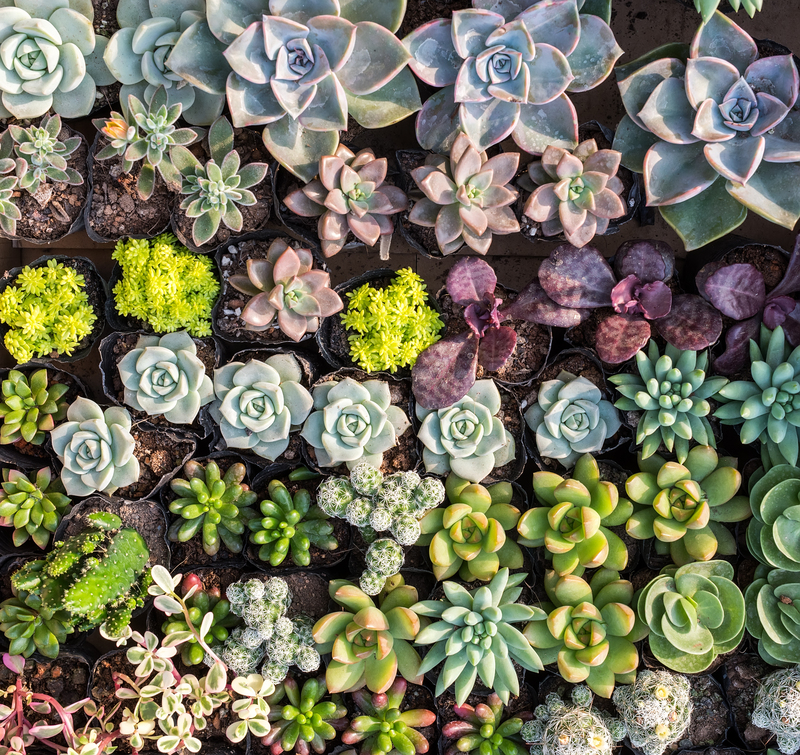Breathing Life into Walls with Vertical Gardens
Posted on 31/08/2025
Breathing Life into Walls with Vertical Gardens
Vertical gardens offer a revolutionary way to transform bare walls into lush, living art - both in outdoor and indoor spaces. As the world faces urbanization and diminishing green spaces, the popularity of vertical gardening has soared, making it a prime choice for environmentally conscious home and business owners. This comprehensive guide explores the captivating journey of breathing life into walls with green walls, dissecting the benefits, design ideas, plant selections, installation, and much more.

Why Vertical Gardens are Reshaping Urban Landscapes
Modern cities are often criticized for their greyness and lack of connection to nature. Living walls flip this narrative by infusing concrete jungles with vibrant greenery. More than just an aesthetic upgrade, green walls offer an array of environmental, psychological, and practical benefits.
Environmental Benefits of Green Walls
- Improves Air Quality: Plants naturally filter pollutants, trapping dust, absorbing carbon dioxide, and releasing fresh oxygen back into the environment.
- Reduces Urban Heat: Urban heat islands are a major concern in city centers. Vertical gardens help cool the local microclimate by providing natural shade and evaporative cooling.
- Supports Biodiversity: Living walls can attract pollinators, birds, and beneficial insects, creating miniature habitats in unlikely places.
Psychological and Practical Rewards
- Increases Well-Being: Studies show that exposure to greenery can lower stress, improve mood, and enhance creativity - even in workplace environments.
- Saves Space: When ground area is limited, vertical gardening maximizes available space, making it an ideal solution for apartments and small patios.
- Enhances Property Value: A professionally installed vertical garden can be a striking feature that adds significant appeal and marketability.
The Versatility of Vertical Gardening
Vertical gardens for walls can be seen gracing building facades, office interiors, restaurant exteriors, residential balconies, and even as room dividers. Their flexibility and modularity let you tailor a living wall to virtually any size, shape, or environment.
Outdoor Vertical Gardens
Outdoor living walls are particularly effective in rejuvenating old buildings, fences, and exposed terraces. These installations utilize robust plant species that can withstand the elements while providing year-round greenery. They may serve as privacy screens, insulating barriers, or simply as visually arresting art pieces.
Indoor Living Walls
Bringing vertical gardens indoors allows for healthier air and a natural ambience. Indoor green walls work well in living rooms, hallways, lobbies, and commercial spaces. Many modern designs incorporate automatic irrigation systems to ensure plants receive the perfect amount of water and nutrients.
Key Components of a Successful Vertical Garden
Creating a thriving vertical garden involves more than attaching pots to a wall. Understanding the essential components sets the foundation for a flourishing, low-maintenance living wall.
1. Framework or Structure
The base of every vertical wall garden is a sturdy frame. These are typically made of metal, plastic, or treated wood and support the weight of the plants, growing medium, and irrigation systems. Modular panels are popular for their ease of installation and flexibility in scaling the garden.
2. Growing Medium
Unlike traditional gardens, soil is not always used. Instead, vertical gardens often employ lightweight substrates such as felt, coir, hydroponic foam, or custom soil blends. The medium should provide adequate moisture, nutrients, and stability for plant roots.
3. Irrigation System
Watering is critical. Automated drip or hydroponic irrigation systems are favored for their consistency and efficiency. Indoor living walls especially benefit from these, as manual watering can be challenging.
4. Plant Selection
Carefully choosing the right plants ensures longevity and beauty. Consider the wall's location, exposure to sunlight, humidity, and temperature. Hardy, shade-tolerant species work best for interiors, while sun-loving, drought-resistant varieties thrive outdoors.
The Best Plants for Vertical Garden Walls
One of the joys of vertical gardening is the diversity of plant choices. Whether you crave lush ferns, aromatic herbs, or flowering showstoppers, there's a plant palette for every taste and need.
Ideal Plants for Indoor Vertical Gardens
- Pothos (Epipremnum aureum): Almost indestructible, pothos boasts trailing vines and lush, variegated leaves, thriving even in low light.
- Philodendrons: Their heart-shaped leaves and climbing habit make them a popular indoor living wall choice.
- Ferns: Boston ferns, maidenhair ferns, and button ferns add texture and require moderate shade and humidity.
- Peace Lily (Spathiphyllum): Known for purifying air, peace lilies also produce elegant white blooms.
- English Ivy: A classic green wall favorite for its adaptability and trailing growth.
Best Outdoor Plants for Vertical Gardens
- Succulents: Sedum, echeveria, and sempervivum offer drought resistance and colorful rosettes.
- Herbs: Basil, thyme, oregano, and mint provide culinary delights and fragrance.
- Flowering plants: Nasturtiums, lobelia, and petunias deliver bursts of color when planted vertically.
- Ornamental grasses: Add movement and architectural interest with carex, festuca, or mondo grass.
Edible Vertical Gardens
For those inclined towards urban farming, living walls can double as productive vertical vegetable gardens. Strawberries, lettuce, dwarf tomatoes, and small peppers all adapt beautifully to wall culture, bringing fresh produce steps away from your kitchen.
Designing Your Vertical Garden Wall: Tips and Inspiration
Successful vertical garden design harmonizes function and form. With mindful planning, your living wall becomes a focal point that delights the senses year-round.
Start Small & Expand Gradually
Especially for beginners, starting with a manageable area ensures you learn the nuances of plant care, watering, and pruning. As your confidence grows, gradually expand your green wall for maximum impact.
Mix Textures and Colors
Combine plants with diverse leaf shapes, sizes, and hues to create dynamic patterns. Alternating upright grasses with cascading vines or interspersing flowering annuals adds depth and visual interest.
Embrace Functional Features
- Privacy Screens: Transform balconies and patios into private retreats with lush plant covers.
- Partition Walls: Divide open-plan interiors or outdoor rooms with living walls that filter light and sound.
- Signage and Art: Spell out company names, logos, or words using colored plants for personalized branding.
Creative Placement Ideas
- Entryways and feature walls
- Kitchen herb gardens
- Bathroom air-purifying walls
- Exterior facades and gate-posts
- Rooftop oases
How to Install a Vertical Garden Step by Step
Whether you're handling a DIY project or planning a large-scale installation, these steps ensure a seamless process to bring green life to your wall:
1. Choose Your Location & Wall
Analyze factors such as available sunlight, wind exposure, ease of access, and structural load capacity. A sturdy, well-lit area works best, particularly if your chosen plants need lots of sun.
2. Select the System
Options range from modular panels, felt pocket systems, and vertical pots to bespoke hydroponic systems. Your decision will depend on budget, desired coverage area, and aesthetic preferences.
3. Prepare the Structure
Install waterproofing and suitable supports to protect the wall from moisture damage and bear the weight of mature plants.
4. Add the Growing Medium
Place your chosen substrate in pockets or panels, ensuring it's evenly distributed for consistent plant growth.
5. Set Up Irrigation
Position drip lines or hydroponic tubes at strategic intervals. For small DIY projects, hand watering or simple gravity-fed systems work; for larger installations, invest in automated solutions.
6. Plant Your Wall
Arrange your selected plants according to your design plan. Start with the largest or structural species, filling in gaps with trailing or accent varieties.
7. Maintain Regularly
Prune, fertilize, and inspect your wall weekly. Clean irrigation lines and reset failing plants as needed to maintain lush coverage year-round.
Maintaining Your Living Wall: Care Tips & Troubleshooting
A well-cared-for vertical garden can thrive for years. Here's how to keep your living wall healthy and beautiful:
Essential Maintenance Tips
- Irrigation Monitoring: Mulch or adjust watering based on season and plant species. Watch for dry or oversaturated patches.
- Regular Feeding: Liquid fertilizers ensure robust growth and vibrant color, particularly for hydroponic setups.
- Pest & Disease Management: Use natural remedies and inspect for signs of mildew or aphids regularly.
- Lighting Adjustments: Supplement with grow lights indoors when natural sunlight is insufficient.
Troubleshooting Common Issues
- Yellowing leaves: Check for overwatering, poor drainage, or nutrient deficiency.
- Wilting or dry patches: Verify even irrigation and adjust watering schedules.
- Poor growth: Assess light exposure and consider replanting with more suitable species.

Future Trends in Living Green Walls
Innovations in vertical garden technology are making living walls smarter and more sustainable. Automated environmental sensors, integrated lighting systems, and eco-friendly substrates are paving the way for green architecture. In the future, expect to see more:
- Self-regulating gardens with remote monitoring
- Biophilic corporate offices and schools
- Edible vertical farms in urban neighborhoods
- Green wall art installations in hospitals for therapeutic effects
Conclusion: Transforming Spaces and Lives with Green Walls
Whether you live in a high-rise apartment, manage a bustling office, or simply crave more nature, you can breathe life into walls with vertical gardens. These living canvases are more than decor; they're an investment in well-being, sustainability, and joy. As you consider embarking on your own green wall adventure, remember: every leaf and vine contributes to a fresher future.
- Explore new vertical garden ideas to inspire your creativity
- Choose the right plants and systems for your needs
- Commit to regular care - and watch your space come alive!
Are you ready to turn plain walls into a celebration of green life? The journey begins with a single plant, but the transformation is profound. Let your living wall be a testament to innovation, beauty, and the enduring link between humans and nature.

